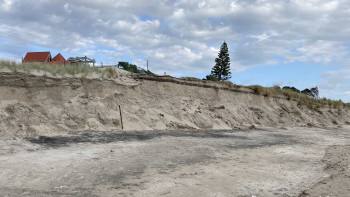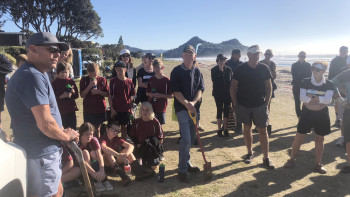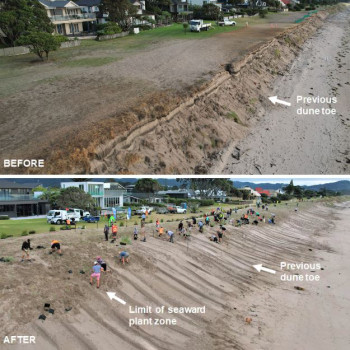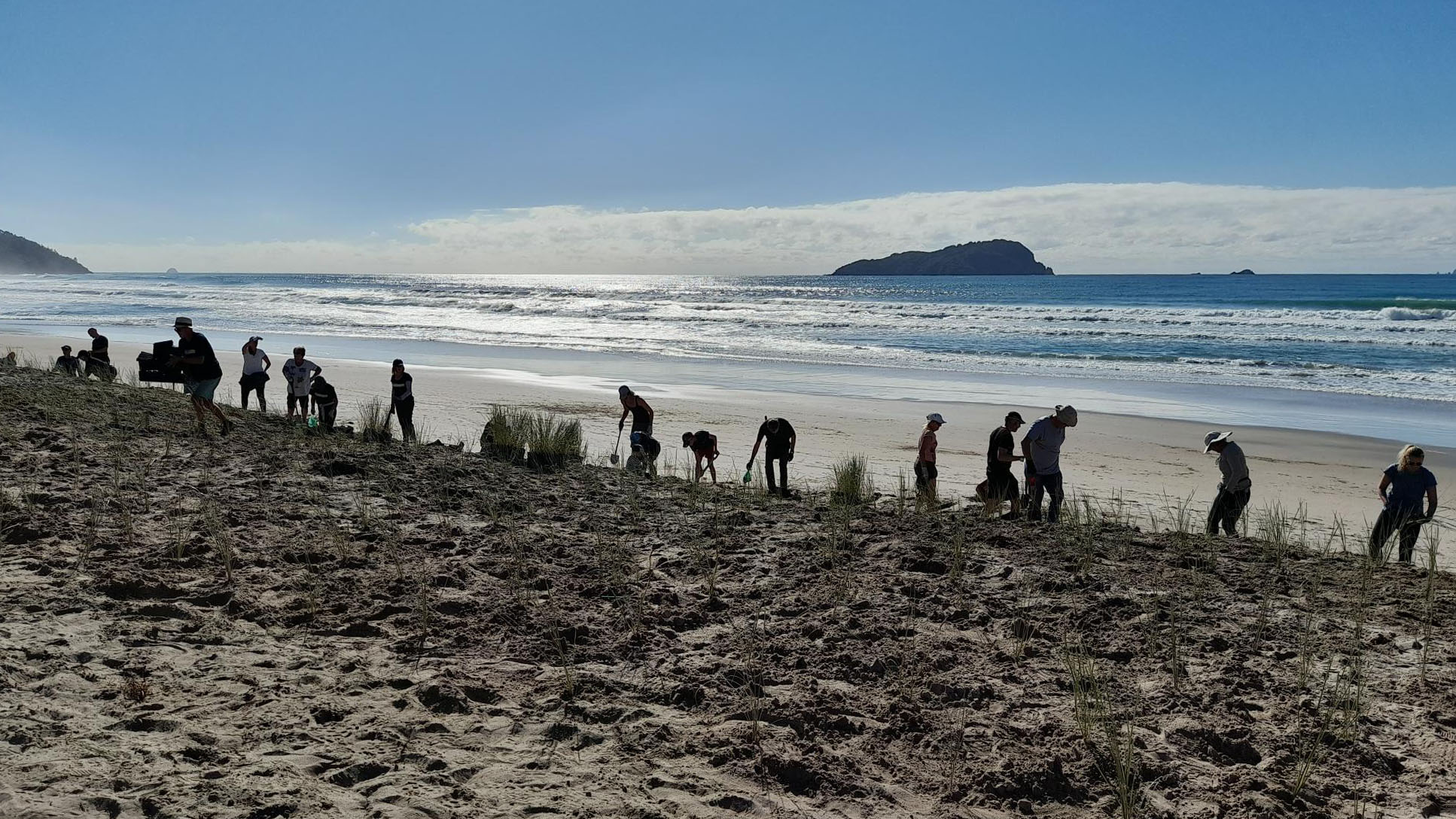“There is a science to all this. The idea is the sacrificial dune erodes and the plants remain to assist in the rebuild.”
– Martin Hopkins, Pāuanui Dune Protection Society

Escarpment at Pāuanui Beach after Cyclone Hale.
Martin Hopkins watched the swells during cyclones Hale and Gabrielle barrel up the newly restored dunes at Pāuanui Beach, cutting an escarpment of between one to three metres in height.
“It was disheartening to say the least,” says the chair of Pāuanui Dune Protection Society.
“However, it must be kept in perspective that this is all a natural process, and we have had major storms before. Erosion happens and the dunes rebuild, and we are now watching the natural rebuilding process.”
The Pāuanui Dune Protection Society is one of the many community Coastcare groups, partnerships between Waikato Regional Council, district councils, the local community, iwi and the Department of Conservation, working to protect and restore coasts of the Waikato region.

Martin Hopkins (Pāuanui Dune Protection Society) and Coastcare volunteers.
In May last year, more than 200 volunteers planted over 15,000 native dune grasses across a 260-metre length of shoreline at the southern end of Pāuanui beach to increase coastal resilience and enable better management of the reserve space.
Their collaborative effort won the national Best Restoration Award at the 2023 Coastal Restoration Trust Conference.
Martin says the new plants were intentionally planted quite far back from the toe of the dune to allow for several metres of the dune to be sacrificed when inevitable storms come.
“There is a science to all this,” he says, crediting staff from Thames-Coromandel District Council.
“The idea is the sacrificial dune erodes and the plants remain to assist in the rebuild.”
Most of the dune grasses planted in 2022 survived the consecutive cyclones, with just about 10 per cent lost.

Before and after dune planting.
“These remaining plants are now mature and have started doing what they are supposed to do, growing down the dune face to trap windblown sand,” says Martin.
“Spinifex is the hero plant in dune rebuilding. Spinifex slows the wind, allowing any windblown sand to slow down and drop in amongst the plants. It shoots out long runners down the dune face, assisting the dune rebuild.
“The escarpment created by the cyclones has now been largely diminished by the action of sand falling from the top and sand blowing up from the beach to the dune toe.
“And we now have spinifex growing down the dune face.”
Martin says it’s important for people to remember that erosion is a natural process.
“Our beaches and dunes operate as a cushion for these events. Dunes erode in storms and rebuild in quieter times.
“It’s been great to watch the whole process and now we are watching the natural restoration. Fingers crossed for no more cyclones for a while!”

